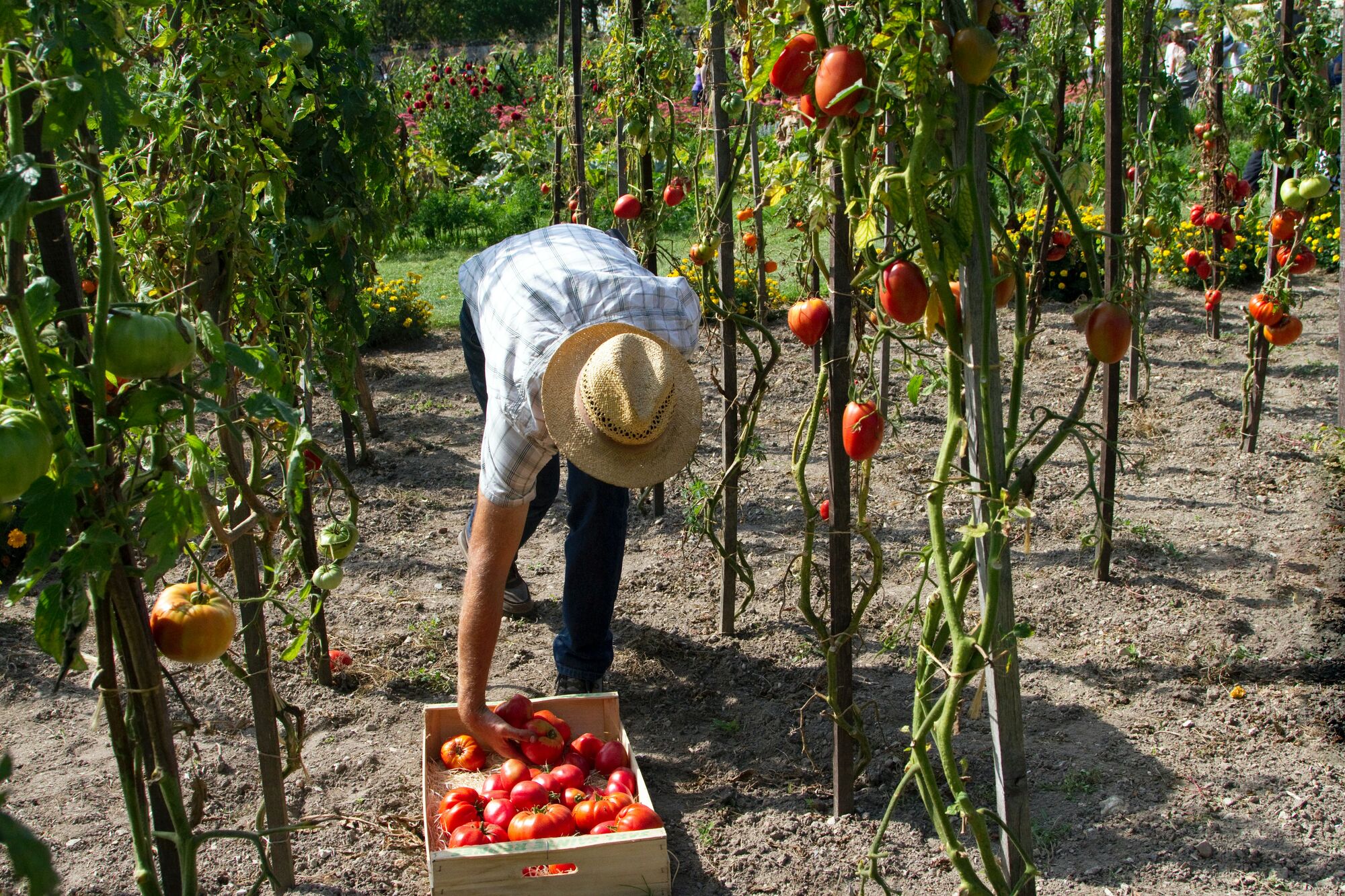Urban Food Security

Urban Food Security
Step 1: Prepare contaminated soils
Why are soils contaminated?
The average soil contamination with pollutants, both of geogenic and human origin, is called background contamination. Radioactivity and heavy metals in particular can, in some places, have a natural density in the soil that is harmful to health. However, anthropogenic soil pollution is particularly relevant for Urban Farming. These can arise from wastewater and unfiltered exhaust, from accidents, abrasion and leaks, dumping of waste and the use of contaminated materials as well as certain fertilizers, sewage sludge and pesticides.
Contaminants of military or agricultural origin, such as chemical weapons, explosives, and human-toxic pesticides, occur less frequently in the urban landscape, but their presence is possible.
Wind and water erosion can spread all pollution over long distances, so soil analyses for large areas are a sensible decision.
What are soils contaminated with?
Inorganic pollutants
- Soils can be contaminated with inorganic pollutants such as heavy metals, cyanides, light- and semimetals, salts and radioactivity. For example, the heavy metals cadmium, chromium, mercury, nickel, lead, copper, zinc, cobalt and thallium are relevant to human toxicology. If they accumulate in the soil, this is usually due to mining, regional metal or chemical industries, historical fighting and road traffic (leaded petrol).
- Light- and semimetals such as arsenic, selenium and beryllium are toxic in excessive concentrations. Arsenic is found, for example, in wood preservatives, as a fungicide or in rat poison in the city. Selenium is used in the processing of electronics, glass and paints. Beryllium is mainly found where electronic waste has been improperly stored.
- Due to new types of automotive catalysts, rhodium, palladium and platinum are increasingly appearing in roadside analyses – the hazard potential is as of yet unknown.
- Cyanides are produced as by-products in the tar and bitumen industries, and until 2010 they were also used in Europe in gold and silver mining.
- Salts, especially road salts in the urban environment, can also damage soil organisms, disturb the equilibrium in the soil and thus make it unusable for food production. The same applies to acid rain, which is triggered by gases such as nitrogen oxides and sulphur dioxide as well as acids such as sulphuric and hydrochloric acid. This alters the pH value of the soil and can thus contribute to the release of heavy metals.
Organic pollutants
The group of organic impurities includes
- Mineral oil hydrocarbons (MKWs) such as diesel, petrol or heating oil
- highly volatile chlorinated hydrocarbons (HFCs) found in cleaning agents and solvents
- (Polycyclic) aromatic hydrocarbons such as benzene, which is almost always detectable in roadsides
- Polychlorinated biphenyls (PCBs), which were commonly used as plasticizers until 2001, -dibenzodioxins and -furans, which are by-products of some industrial processes (e.g. chlorine bleaching of paper) and are present in building fires and waste incineration without filter systems
- Microplastics, which are not only produced by the slow decomposition of plastic waste, but also by the abrasion of tyres, and are therefore mainly found on surfaces close to the road.

What are the dangers of a contaminated floor?
A contaminated soil can only fulfil its function insufficiently or not at all. Soil-borne organisms are disturbed, in extreme cases they are left without a basis for life. Copper is toxic to beneficial organisms such as earthworms even in low concentrations, but plants also react sensitively to contaminated soils. This is shown by low or absent growth or weak root penetration. Indicator plants such as birch trees or a so-called galmeiflora (plants that prefer metal-containing soils) with otherwise absent growth can point to severe contamination.
If food is grown on the contaminated soils, there is a risk of accumulation first in the plants and then in the human body, especially in the liver. The greatest danger is long-term damage such as the development of cancer or the reduction of fertility. In addition, genetic damage has also been observed.
What are the decontamination options?
There is an almost endless list of options depending on the type of contamination, the given time period and the available budget. Less expensive options often take more time to fully regenerate the soil, but they do not require the costly removal and subsequent regeneration.
In-situ and economic
In order to use urban areas for food production, low-cost methods that can be applied in-situ are best. In most cases, different applications are combined to increase effectiveness. Also, in heavily contaminated soils, remediation can be postponed by planting in raised beds and containers; busy roadsides, former landfills or fallow land are among these.
Pollutants bound in the soil persist for different lengths of time. Organic pollutants as well as cyanides are in principle degradable by soil organisms, inorganic substances can be removed from the soil by phytoremediation and the use of humic substances, for example.
Hyperaccumulators and humic substances
If a soil analysis is carried out because, for example, a larger area can be managed in the cityscape, different methods can be used depending on the pollutant:
More expensive methods include the use of scrubbing liquids followed by high pressure extraction, thermal treatments or soil ventilation.
More favourable are the use of extremophilic microorganisms and plants that can convert or absorb heavy metals or organic substances such as mineral oils and chemicals. These plants are logically not suitable for consumption or composting, but in many cases can be used as biomass or insulation. In phytomining, the precious metals are extracted from the ashes by burning the plants.
Hyperaccumulators are plants that can absorb up to hundreds of times more pollutants than other plants would survive. Such plants for phytoremediation are, for example, hemp (heavy metals), the chestnut bolete mushroom (radioactive caesium and metals), the entire plant genus of halophytes/salt plants (super-salinity) such as the Queller, but also sunflowers, tobacco plants or the thick-stemmed water hyacinth belong to this group.
There are tables that assign hyperaccumulator plants to pollutant loads, for example, here: progressive-agrarwende.org/phytosanierung/
A very comprehensive table can be found here: https://gaz.wiki/wiki/de/Hyperaccumulators_table_%E2%80%93_3
Phytoremediation works best with the support of appropriate microorganisms added to the soil, such as certain bacterial cultures. Nevertheless, they can only be part of the remediation strategy, as they only extract certain substances and have no influence on others.

How can humic acids be used?
The effect of humic substances in the remediation of soils has been scientifically proven in many cases (for an excerpt see appendix). Completely without plants, but also in combination with phytoremediation, humic acids are available as a highly potent, natural application. In contrast to other applications, humic acids are not only non-toxic, but also beneficial to the health of humans, animals and the environment.
Humic acids have the special feature that they are polyfunctional and have a system-wide positive effect on soil and plants. This means that they can render all kinds of environmental toxins in the soil harmless or create conditions in the soil that support the self-hygienisation processes in soils. Soil analyses, especially for small areas, can thus become obsolete, as remediation and stabilisation by humic substances can be used for all pollutants. Slightly contaminated soils can be significantly improved with high probability and low effort. Three decontamination principles play a role here: degradation to harmless substances, encapsulation and mobilisation with subsequent removal from the system.
The prophylactic effect is also interesting. After all, growing food in urban areas means basically exposing it to further environmental toxins, especially through the air, but also through irrigation. A concept that includes rhythmic soil maintenance through the addition of humic acids enables healthy food in the long term.
Recommendation for use
HUMIN-S 118 can be used to remove water impurities in irrigation water and for initial remediation of contaminated soils. After soil cleaning, a high-quality humic acid preparation such as HS®-300 BIO BASIC can significantly improve urban farming results.
HS®-300 BIO BASIC, applied regularly, will steadily increase the humus content in the soil so that beneficial soil organisms, microorganisms and the pH value are kept in optimum balance. This reduces the risk of harmful insects, bacteria and fungi and ensures a rich harvest of nutrient-rich food. The release of pollutants from the soil is kept low by a high humus content and decomposition is accelerated.
When planting beds, it is a good idea to ensure that the soil is completely covered with plants or mulch. This increases beneficial soil activities and CO2 storage, reduces evaporation and the likelihood of littering or contamination from animal droppings. Permaculture and syntropic farming principles can multiply the efficiency and resilience of cultivation.
Bioremediation for urban gardeners – what would you like to know more about? Write it in the comments! You can find more information on our website or in a personal conversation!
A selection of studies on soil remediation with humic substances:
Hatfield, K., Hertkorn, N., Perminova, I.V..(2005) Use of Humic Substances to Remediate Polluted Environments: From Theory to Practice, Springer
Mosley, R. (1998) The Effects of Humates on Remediation of Hydrocarbon and Salt contaminated Soils.
Kulikova, N.A. and Perminova, I.V..(2002) Binding of Atrazine to Humic Substances from Soil, Peat,and Coal related to their Structure, Environ Sci. Technol. 36.
Weber, E.J., Spidle, D.L., Thorn, K.A. (1996) Covalent binding of Aniline to Humic substances. 1. kinetic studies, EnvironSci. Technol. 30.
Chiou, C.T., Kile, D.E., Brinton, T.I., Malcolm, R.L., and Leenheer, J.A. (1987) A Comparison of the Water Solubility Enhancements of Organic Solutes by Aquatic Humic Materials and Commercial Humic Acids, Environ. Sci. Technol. 21.
McCarthy, J.F., Jimenez, B.D., and Barbee, Th. (1985) Effect of dissolved Humic Material on
Accumulation of Polycyclic Aromatic Hydrocarbons: Structure-activity Relationships, Aquat.Toxicol. 7.
Steinberg, C.E.W., Haitzer, M.; Brueggemann, R., Perminova, I.V., and Yashchenko, N.Yu. (2000)
Towards a Quantitative Structure Activity Relationship (QSAR) of dissolved Humic Substances as detoxifying Agents in Freshwaters, Int. Rev. Hydrobiol. 85(2-3).
Leversee, G.J., Landrum, P.F., Giesy, J.P, and Fannin, T. (1983) Humic acids reduce bioaccumulation of some polycyclic aromatic hydrocarbons, Can. J. Fish. Aquat. Sci. 40
Kukkonen, J. (1991) Effect of pH and natural Humic Substances on the Accumulation of Organic
Pollutants in two Freshwater Invertebrates, in B.Allard (ed.), Humic Substances in theAquatic and Terrestrial Environment.
Kukkonen, J., and Oikari, A. (1987) Effects of aquatic Humus on Accumulation and Toxicity of some Organic Micropollutants, Sci. Total Environ. 62.
Perminova, I.V., Grechishcheva, N.Yu., Kovalevskii, D.V., Kudryavtsev, A.V., Petrosyan, V.S., and Matorin, D.N.(2001) Quantification and Prediction of Detoxifying Properties of Humic Substances to Polycyclic Aromatic Hydrocarbons related to Chemical Binding, Environ.SciTechnol. 35.
Zenk MH (1996) Heavy metal detoxification in higher plants – a review. Gene 179: 21-30.


Comments
No Comments